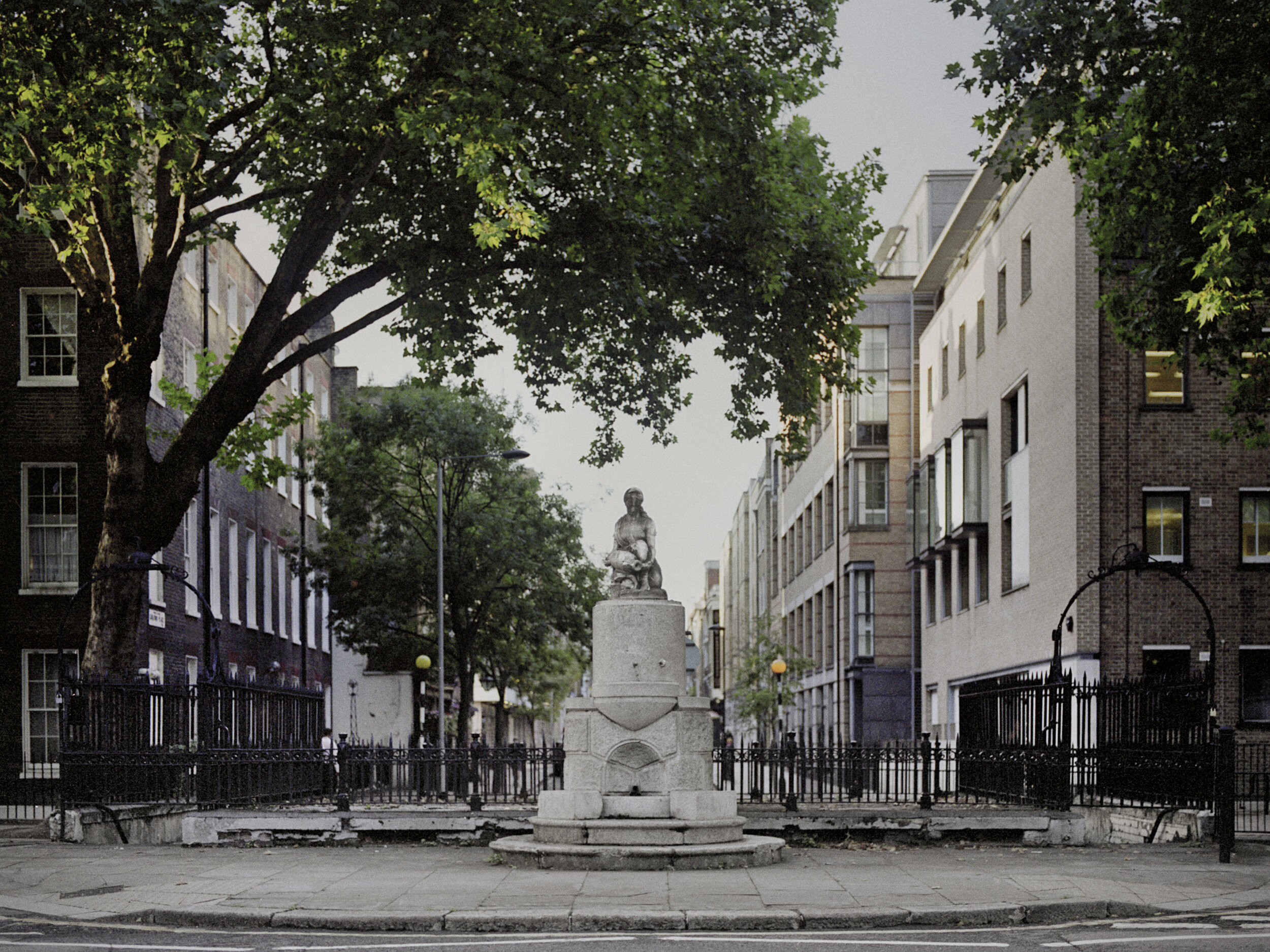
Fountain
Research-based activism for recovering a derelict public toilet in Central London for public use.
Fountain (2013-15)
Public Convenience, Guildford Place, WC1, Central London
Collaborators:
Catalina Pollak Williamson + Edwina Attlee + Rugby Residents Association.
Publication:
Pollak Williamson, C. (2022) ‘‘Fountain’, from Victorian necessity to modern inconvenience: Contesting the death of public toilets’, Urban Studies, 59(3), pp. 641–662. doi: 10.1177/0042098021994705.
Fountain was a site specific installation conceived as an attempt to reconfigure and appropriate the public toilets in Guildford Place as a new civic space. The intervention proposed to bring the public toilets back to civic life by using the existing underground infrastructure – its water supply and drainage system – to create an interactive water feature at street level; in other words, a public fountain. By replacing the original cast iron gates with a sheet of falling water that would become activated as soon as a pedestrian tried to enter the building, the premise was the creation of a paradoxical image: the building using its own infrastructure to close itself up and deny public access.
Fountain did not attempt to revive the public toilet as it was, but rather to expose and bring awareness to the hidden logics that are currently shaping public space, namely the privatisation of spaces and services that were once considered necessary civic infrastructure. The decision to do this in the form of a fountain of falling water that would cascade and flood the access to the building once activated, was meant to amplify the building’s ruination in order to render the derelict site visible, and by doing so, project the facility as a monument to a past ideal of public civility. Bringing the building back to civic life by enhancing the public space at street level as an aesthetic and playful experience meant returning the derelict site not to what it was, but into what it was: a valuable public asset.
Sadly, this intervention never did materialise. As a result of the pressure exerted to the owner of the site, the University of London, in the determination to develop the project, the University repossessed the site from Camden, only to decide to sell it as part of its portfolio of disposable assets. While the intention was to create a space to invite contestation and deliver a project imbued with the spirit of social justice, the process was inadvertently mobilising the exact opposite forces. The site became visible to those in the position of treating it as a disposable asset. For the University, reclaiming jurisdiction of a site for which they had no obvious use, meant only one thing: using it as a hot commodity in the real estate game.
Inspired by the legacy of Coram’s Fields (the children’s park just opposite the toilets), which owes its existence to a local community bid to save the land where the Foundling Hospital once stood from development, I turned to community activism as a potential means of challenging institutional power.
If Fountain wanted to expose and bring awareness to the hidden logics shaping public space, the new intervention would need to contest this logic effectively. The fighting against the sell-off of Guildford Place, became an ethical stance against the privatisation of public space.
In England, an asset of community value (ACV) is land or property of importance to a local community which is subject to additional protection from development under the Localism Act 2011. Meeting with the local Residents’ Association and engaging with a series of local institutions for support, the decision was to try listing the toilets as an asset of community value with Camden Council. If successful, this would offer a six-month window to be able to bid for the site. The plan was to use this time to apply for funding from the Greater London Authority, together with running a crowdfunding and media campaign to raise enough funds to purchase the site. This platform would be used meanwhile for the purpose of reigniting the discussion of public toilet provision, and furthermore, what constitutes public ownership. The figure of a Community Land Trust would be put in place to make sure the site remained owned and managed by and for the benefit of the local community.
Camden rejected the application only three days after receiving it, on the grounds that for a site to be eligible for listing it should have been in use by the community in the ‘recent’ past. Moreover, they stated that they did not consider that the public toilets “furthered the social wellbeing or interest of the local community”. As potential bidders, we received an email sent by the Estate Agent acting for the University of London – on the same day we had submitted the ACV application – assuring prospective buyers that our application would not delay the sale. That the failure of the application was treated by the Council and University as a foregone conclusion exposes the cynicism of their approach. We tried to contest the decision with no success. The site was bought by the owner of a chain of coffee shops and refurbishment work started soon after.

The purpose of transferring the building’s reinvested agency to the pedestrian through the embodied experience of shock – by getting wet by the curtain of falling water – followed by the potential appropriation through playful behaviour (is it my body that triggers it?, can I cross before getting wet?) was to produce a space for critical reflection towards the socio-political discourses of provision (why am I being denied access?).
















